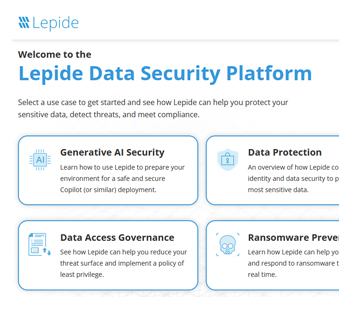Last Updated on February 6, 2025 by Deepanshu Sharma

Cybersecurity audits evaluate the technologies and regulations in place to ensure secure online behavior. The goal is to determine whether or not all applicable laws and standards are being appropriately and effectively complied with by conducting a more comprehensive evaluation of current technology, regulations, and procedures. Many best practices can be used by organizations to gauge the effectiveness and efficiency of cybersecurity systems, processes, and controls during audits.
What is a Cybersecurity Compliance Audit?
A cybersecurity audit evaluates the rules and guidelines to ensure safe online conduct. To determine whether all pertinent standards and requirements are being successfully and efficiently met, a more comprehensive assessment of current technology, policies, and procedures is undertaken. Several best practices are available for organizations to utilize when conducting audits to assess the effectiveness and efficiency of cybersecurity systems, processes, and controls.
A voluntary compliance framework such as SOC2 or ISO 27001, or a collection of regulatory compliances such as GDPR and HIPAA, requires the company to maintain a rigorous level of security. In cybersecurity compliance audits, an outside organization evaluates the presence of appropriate security measures.
Purpose of Cybersecurity Compliance Audits
The purpose of a cybersecurity audit is to confirm that an organization is adhering to various cybersecurity regulations, standards, and recommendations. A cybersecurity audit assesses an organization’s current compliance status by contrasting it with a specific industry standard. To ensure that all control gaps are identified and addressed as quickly as feasible with targeted suggestions, a gap analysis is then carried out. A few areas that ought to be discussed in a compliance audit are as follows:
- Identify Gaps: Gaps in the organization’s compliance system might be found with the help of compliance audits. Any inconsistencies, flaws, or noncompliance that might cause problems with operations, the law, or finances are sought after by an auditor. In order to help the business reduce possible risks, the audit report lists these shortcomings and offers suggestions for fixing them.
- Prevent Data Breaches: The easiest way to identify gaps in your data security program is to prepare for a compliance audit. Using a security compliance framework, such as ISO 27001 or the NIST Cybersecurity Framework, can help you find areas where your firm is weak and improve its processes and policies. After that, you may either implement new security procedures and policies or enhance existing ones to better protect your business and your clients’ data.
- Customer satisfaction: Nowadays, many firms will not only believe what you say when it comes to data security and privacy issues. Before they will consider working with your firm, corporations’ procurement and IT departments will instead want documentation of audit findings from a recognized public accounting firm. Companies must finish an audit to be considered compliant with some of the most frequently requested or needed data security frameworks.
Steps to Prepare for a Cybersecurity Compliance Audit
The following steps should be taken prior to starting a cybersecurity audit:
- Selecting an Audit Team: Putting together an audit team with the expertise and experience needed to carry out the audit is the first stage. Whether they are external professionals with expertise in fields like risk management, fraud investigation, and quality management, or internal personnel like compliance officers, this team should have members who are neutral and unbiased. The team’s makeup guarantees an impartial and thorough evaluation of the organization’s compliance situation.
- Audit Scope: It is crucial to establish the audit’s goals and scope before beginning. Certain security frameworks demand regular internal audits. For instance, in order to comply with the HIPAA security rule, covered companies must perform a “risk analysis. In order to decide which topics the audit will cover, which risks need to be handled specifically, and what results are sought, this step includes meeting with senior stakeholders. The scope is impacted by the outcomes of prior audits, noteworthy modifications since the last audit, and any specific areas of concern. A thorough audit strategy that outlines the procedures and standards for assessing compliance is outlined in this step.
- Pre-Audit Risk Assessment: Make use of this evaluation to rank the areas that want improvement. In addition to helping you get ready for the audit, this proactive strategy improves your security posture in general. Think of directing your assessment with frameworks such as NIST or ISO 27001 to guarantee a thorough examination of your cybersecurity environment. With this approach, auditors can focus on areas that could pose significant risks to the company, providing targeted insights and recommendations. It also allows the audit’s focus to be aligned with the organization’s risk tolerance and strategic goals, ensuring that the most critical areas are given the attention they need.
- Identify and Review Security Policies and Controls: It is quite likely that your firm currently has safeguards in place to protect the confidentiality, integrity, and availability of your systems and information if you are anticipating a cybersecurity audit. In order to make sure that the organization’s policies, procedures, and internal controls adhere to applicable laws and regulations, this stage entails a thorough assessment. Auditors may interview stakeholders and staff to learn more about how these policies are applied and assess how well the procedures in place work to stop, identify, and address non-compliance. For example, in an IT audit, auditors may evaluate access control rules, looking at the security mechanisms in place and how system access is handled.
- Reports and Analysis: It is essential to communicate clearly and effectively during the audit. The audit team ought to give frequent updates on their results and development. Following the audit, a thorough report is written outlining the non-compliance areas, determining the underlying reasons, and suggesting remedial measures. This report needs to be understandable, useful, and in line with the organization’s strategic objectives. It should also offer insightful information on how to reduce risks and enhance compliance procedures.
- Proper Follow-up: To make sure that the suggested remedial measures are carried out and that the concerns found are adequately addressed, follow-up is essential. To make sure that the organization’s compliance posture has improved and that any previously identified shortcomings have been fixed, auditors may carry out follow-up evaluations to confirm the efficacy of these measures. This ongoing observation aids in maintaining compliance and adjusting to modifications in internal procedures or legal requirements.
- Incident Response Plan: Because auditors will probably want to see proof that your incident response protocols are not merely theoretical but have been proven in practice, make sure you document these tests and their results. Your organization’s ability to successfully manage possible security problems is demonstrated by this preparation. Any cybersecurity program must include incident response. Examine your incident response strategy to make sure it is current and in line with industry best practices. Above all, test the idea using simulations or tabletop exercises.
- Third-Party Risks: The evaluation of third-party risks is the next stage. In today’s interconnected business environment, the cybersecurity posture of your supply chain is determined by its weakest link. Review your third-party risk management protocols and ensure that your assessments of your vendors’ security protocols are up to date. Obtain documentation of your vendor management practices, including service level agreements (SLAs), contracts, and any security assessments you have conducted. Get ready to demonstrate how you monitor and mitigate the risks associated with third parties accessing your systems and data.
How Does Lepide Help?
It takes careful preparation, organization, and a proactive approach to resolving possible vulnerabilities in order to be ready for a cybersecurity audit. By taking the above steps, you may leverage the audit process to improve your overall security posture while also expediting it.
Lepide Data Security Platform streamlines compliance with laws like the CCPA, GDPR, HIPAA, and others with its user-friendly reports and detailed audit logs. Organizations can reduce risks, detect threats, and gain the trust of stakeholders by centralizing data security and compliance activities through Lepide
Schedule a demo with one of our engineers to learn more about how the Lepide Data Security Platform can help you pass your next cybersecurity compliance audit

 Group Policy Examples and Settings for Effective Administration
Group Policy Examples and Settings for Effective Administration 15 Most Common Types of Cyber Attack and How to Prevent Them
15 Most Common Types of Cyber Attack and How to Prevent Them Why AD Account Keeps Getting Locked Out Frequently and How to Resolve It
Why AD Account Keeps Getting Locked Out Frequently and How to Resolve It
